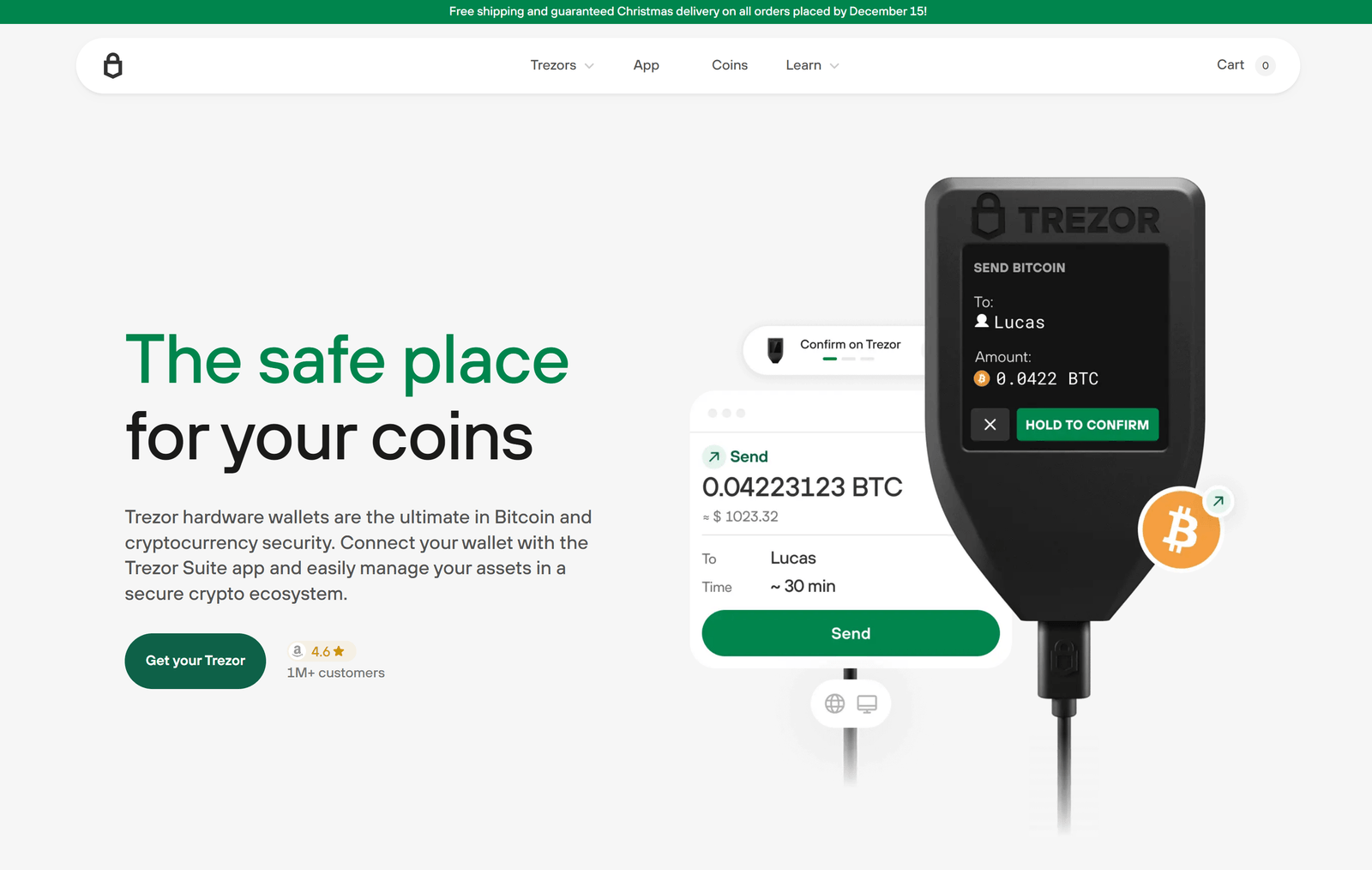🔌 Trezor Bridge: The Secure Connection Between Web and Wallet
To fully experience the security and convenience of a Trezor hardware wallet, you need a reliable way to connect it with your browser and desktop apps. That’s where Trezor Bridge comes in.
Trezor Bridge is a small background service that acts as the secure communication layer between your Trezor device and your computer. Without it, your browser wouldn't be able to detect or interact with the hardware wallet properly.
In this article, you’ll learn what Trezor Bridge does, why it’s essential, how to install it safely, and how to troubleshoot any connection issues.
💡 What Is Trezor Bridge and Why You Need It
When you plug in your Trezor Model One or Model T to your computer, it doesn’t automatically start working with your browser. That’s because browsers don’t natively recognize hardware wallets. Trezor Bridge solves this problem by creating a secure communication tunnel between your browser and device.
Without Bridge, apps like Trezor Suite, or browser wallets like MetaMask, can't detect your Trezor.
Think of Bridge as the trusted middleman between your hardware wallet and your screen. It ensures:
- Seamless device recognition
- Safe signing of transactions
- Secure key communication
- Compatibility across all operating systems
🛠️ Installing Trezor Bridge in Just a Few Easy Steps
Installing Trezor Bridge is simple and only takes a few minutes. Follow these steps to get started:
- Go to the official website: https://trezor.io/start
- Click on “Download Trezor Suite” (Bridge will be included, or offered as a separate link)
- Choose your operating system: Windows, macOS, or Linux
- Download the Trezor Bridge installer
- Run the installer and follow on-screen instructions
- Restart your browser or computer after installation
- Connect your Trezor and launch Trezor Suite
✅ Done! Your Trezor should now be recognized securely by Trezor Suite and compatible web applications.
🖥️ Supported Platforms for Trezor Bridge Integration
Trezor Bridge works across major desktop operating systems and browsers. Currently supported:
- Windows 10 & 11
- macOS (Intel and Apple Silicon)
- Linux distributions (Ubuntu, Fedora, Arch, etc.)
Supported browsers:
- Google Chrome
- Mozilla Firefox
- Brave
- Microsoft Edge (Chromium version)
🌐 Note: Bridge is not required if you are using the desktop version of Trezor Suite, but it is necessary for browser-based access, including third-party integrations like MetaMask.
🔐 Security Benefits of Using Trezor Bridge
Trezor Bridge isn’t just a connector—it’s built with security in mind. It ensures the integrity of your transactions and keeps your private keys safe from online threats.
Security highlights include:
- End-to-end encrypted communication between your browser and Trezor
- Only allows trusted sites and apps to interact with your device
- Prevents malicious browser extensions from spoofing interactions
- Automatically updates with the latest security patches
- Code is open-source and verified by the community
🔒 Even if your computer is compromised, Bridge helps ensure that your private keys never leave your Trezor device.
🌐 Use Trezor Bridge With MetaMask and Web3 DApps
Bridge is essential for using Trezor with MetaMask, which enables you to explore the decentralized world of Ethereum, DeFi, and NFTs—securely.
How to connect Trezor with MetaMask using Bridge:
- Install MetaMask in your browser
- Open MetaMask > Settings > Advanced
- Click “Connect Hardware Wallet”
- Select Trezor and follow the prompts
- Use Trezor Bridge to authorize the connection
This lets you:
- Sign Ethereum & ERC-20 transactions with your Trezor
- Interact with DeFi platforms (Uniswap, Aave, OpenSea)
- Stay protected from phishing and keyloggers
🛡️ Bridge ensures your wallet remains unhackable, even when using Web3 apps.
🔄 Keeping Trezor Bridge Updated and Bug-Free
To make sure your Bridge continues working smoothly, it’s important to keep it updated. Trezor releases occasional updates to improve compatibility and security.
Here’s how to update:
- Visit trezor.io/start or suite.trezor.io/web
- If a new version of Bridge is available, you’ll be prompted to install it
- Download the update and follow installation steps
- Restart your browser afterward
🧼 Tip: If you’re having connection issues, reinstalling Bridge usually solves it.
🐞 Troubleshooting Trezor Bridge Issues Quickly
Occasionally, Trezor Bridge may not work due to browser or system updates. Here's how to fix common issues:
- Device not detected? → Check cable, USB port, and restart browser.
- Bridge not responding? → Reinstall Bridge, disable conflicting extensions.
- Multiple apps conflicting? → Close all other wallet/browser tabs.
- Browser blocking detection? → Enable WebUSB in Chrome or switch to Trezor Suite Desktop.
If all else fails, contact official Trezor support or use their community forums.
🔗 Difference Between Trezor Bridge and Trezor Suite
Some users confuse Trezor Bridge with Trezor Suite, but they serve different purposes:
- Trezor Bridge = Background communication service
- Trezor Suite = Full-featured user interface to manage assets
If you're using Trezor Suite Desktop, you may not need Bridge. But if you're using:
- The browser version of Trezor Suite
- MetaMask or other browser-based apps
Then Bridge is absolutely essential.
✅ Final Thoughts: Trezor Bridge Powers Safe Crypto Interaction
In a world where browser-based scams and online threats are everywhere, Trezor Bridge provides the essential protection layer that allows you to use your hardware wallet confidently.
It ensures that:
- Your device is detected by trusted apps
- Communication between device and browser is encrypted
- Private keys never leave your Trezor
- You stay protected in both Web2 and Web3 environments
🔌 Start using Trezor the right way. Download Bridge at 👉 trezor.io/start
Made in Typedream
